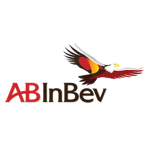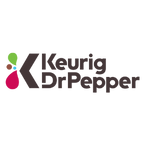The Colorado River Basin, which extends into seven U.S. states, two Mexican states, and 29 federally recognized tribal reservations, provides water to almost 40 million people and a $5 billion agricultural industry. The watershed is under tremendous pressure not simply from the demands of rising food production and growing cities, but also from extreme weather. This combination has serious implications for the current and future state of agriculture.
For the last 20 years, the Colorado River Basin has been in a severe drought, with the period between May and April 2021 the driest on record. Due to persistent high temperatures that increase evaporation and decrease snowpack, the river’s flow is expected to drop by 20% in the next 30 years. These extreme fluctuations in the Colorado River’s flow were not accounted for when water rights agreements were first drafted, resulting in more water being allocated than can be accounted for. Consequently, from 2000 to 2015, water consumption exceeded the total river flow three-quarters of the time. In August 2021, the federal government declared a water shortage in the basin for the first time ever. Anticipating water reductions for the lower basin states has already led some farmers to leave fields fallow or switch to less water intensive crops, while others will increase groundwater pumping.
Agriculture uses approximately 80% of the Colorado River’s water, using it to irrigate 15% of the nation’s farmland, and produce 90% of the winter vegetables. Wheat, corn, berries, and fresh produce are likely to be particularly strained by supply rationing to manage water-stress, as well as the crops, including alfalfa and hay, used by farmers to feed cattle. A recent study found that the largest consumer of river water in the Western U.S. is irrigation for cattle-feed crops.
Companies and investors have a unique opportunity to respond to water risks in their operations and supply chains within the Colorado River Basin, advocate for sustainable and resilient water policies, and ensure sustainable water management.
Water Risks and Opportunities in the Colorado River Basin
By the Numbers
|
|
| ~80% of diverted water used for agriculture |
15% of nation’s crop production |
90% of nation’s winter vegetable production |
1/2 of the water goes to grow feed for livestock and cattle |
Key Commodities
|
|

Cattle and Dairy |

Cotton |

Alfalfa and Forage Crops |

Vegetables |
Key Risks |
|||
 |
Water ScarcityOver allocation of water rights paired with extended severe drought are depleting the Colorado River. |
||
 |
Climate ChangeClimate change exacerbates extreme weather patterns, such as severe droughts and unpredictable precipitation, and wildfires. Rising temperatures also lead to a lighter snowpack in the mountains that melts quickly resulting in less sustained river flow.The river's flow is expected to continue dropping in the near future because of climate change, amplifying existing water scarcity. |
||
Companies with Operations and Suppliers in the Colorado River Basin
Agriculture is the largest water user, contributing to the extreme water depletion in the Colorado River Basin. However, out of the 17 companies in this report with operations and supply chains in the region, only a handful have publicly acknowledged the risks they are facing. Rapid action is needed to protect this important resource. While populations and the demand for water continue to increase, scenario analyses and risk assessments have shown that the river's waters are being depleted at unprecedented levels.
Molson Coors
Molson Coors offers financial incentives to growers to help achieve the company's goal to improve water-use efficiency in its agricultural supply chain and direct operations by 10% by 2025. In some cases, the company covers 6 to 10% of grower’s water-saving expenses, on top of cost sharing provided by the USDA.
Over the past 10 years, Molson Coors has invested $20 million into its “Better Beer, Better Barley” sustainability initiative. Around 800 barley farms use the “Grower Direct Portal,” a digital platform that tracks farm level data on yields, soil moisture, and water and pesticide use to help identify and mitigate risks and share best practices among growers. Molson Coors has installed weather stations and soil moisture probes across barley farms in Wyoming, Montana, Colorado, and Idaho.
Danone
Danone has committed to adopting locally relevant sustainable agriculture in high risk watersheds to improve soil health and water management on 13,000 acres of dairy and dairy feed lands across the US by 2025.
Keurig Dr Pepper and Coca-Cola
Keurig Dr Pepper and Coca-Cola are part of a $4 million funding agreement that compensates the Colorado River Indian Tribes for conserving up to 150,000 acre feet of their water. The funding also supports the tribes in modernizing their irrigation systems and conserving additional water.
PepsiCo
PepsiCo collaborates with The Nature Conservancy on conservation efforts and irrigation efficiency in the Colorado River Basin, returning 370 million liters of water back into the river in 2019.




















